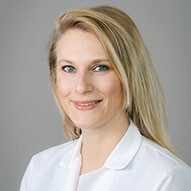Legg-Calvé-Perthes disease in children
Legg-Calvé-Perthes disease (Perthes disease) is a hip joint condition that occurs in children when the blood supply to the head of their thighbone (femur) is limited. Without sufficient blood supply, the bone weakens and can easily break, causing soft tissue damage. At the Children's Health℠ Andrews Institute, our pediatric orthopedists are experts at diagnosing this rare condition.
What is Legg-Calvé-Perthes disease in children?
Legg-Calvé-Perthes (Perthes disease) disease can be difficult to diagnose because its signs and symptoms are similar to a variety of other pediatric hip conditions we treat, like acetabular labral (hip) tears and hip impingement.
Our highly skilled physicians work collaboratively to accurately diagnose pediatric hip conditions like Legg-Calvé-Perthes disease. After diagnosis, we design an individualized treatment plan for your child’s unique needs.
Legg-Calvé-Perthes disease happens when blood is not flowing properly to the head of the thighbone (femur), causing the bone to decay. Children with Legg-Calve-Perthes disease may have hip pain, joint stiffness and muscle weakness.
When Legg-Calvé-Perthes disease is detected early, most children can be treated with nonsurgical therapies such as activity modification and rehab. We offer all the care your child needs in one convenient location.
What are the signs and symptoms of Legg-Calvé-Perthes disease in children?
Signs and symptoms of Legg-Calvé-Perthes disease include:
Stiffness
Limited range of motion
Pain in the hip, groin, thigh or knee — especially with activity
Limping
How is Legg-Calvé-Perthes disease in children diagnosed?
If your child is experiencing hip pain, limited range of motion or weakness in the hip joint, our physicians will conduct a thorough diagnosis to determine if Legg-Calvé-Perthes disease is the problem.
Diagnostic testing may include:
Physical exam - Looks at your child’s affected hip, checking for pain, discomfort, limited range of motion and weakness
X-ray - Uses invisible electromagnetic energy beams to take detailed images of the hipbone and thighbone
MRI (magnetic resonance imaging) scan - Uses magnetic fields and radio waves to take detailed pictures of the hip
What are the causes of Legg-Calvé-Perthes disease in children?
While the exact cause of Legg-Calvé-Perthes disease is unknown, some children are at higher risk than others for developing the condition.
Risk factors
Activity - Physically active children are at higher risk.
Gender - Boys are more likely than girls to develop the condition.
Age - Children ages 4-8 are at increased risk.
How is Legg-Calvé-Perthes disease in children treated?
Legg-Calvé-Perthes disease can be successfully treated, with the help of our expert physicians. Our treatment ensures the bone heals properly, preserving the round shape of its head. This approach helps restore the joint’s normal function and avoids other hip problems.
Nonsurgical treatments may include:
In-house physical therapy (PT) and rehabilitation
Medication to help manage pain
Activity modification
Crutches or bracing
Rest
Sometimes symptoms worsen and surgery may be required. An expert pediatric surgeon realigns the joint, to hold the thighbone head in the hip socket while the bone and joint heal. Before surgery, your child’s doctor will answer any questions you may have about your child’s procedure.
Legg-Calvé-Perthes disease doctors and providers
 Kathryn Bauer, MDOrthopedic Sports Medicine Surgeon
Kathryn Bauer, MDOrthopedic Sports Medicine Surgeon